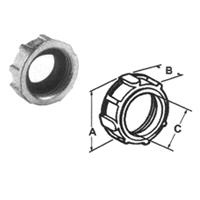Featured Terms
Electrical Slang
What do a "bug" and a "cherry" have in common?
They are both electrical slang terms!
Curious about what these and other slang terms mean?
Scroll through our collection of slang terminology used in the electrical industry!
Whether you are an electrician, contractor, or just someone trying to understand what your local electrician is jabbering about, use the glossary to learn trade slang and electrical jargon.
Baffled by a term you just overheard?
Type it in the search box at the top and flip the switch!
4/19/2024
The term Quadplex and Triplex comes from the Murray (ITE) product and in general refers to a breaker that offers the benefits of 4 poles in two breaker positions with the benefit that if one phase trips on the 240v configuration, the other phase trips internally instead of relying on the pole handles to be physically tied. A QUAD breaker is when the two outside two poles are tied together and the inside two poles tied together providing two 2-pole 240vac breakers. A Triplex breaker is when either A) the two outside poles are tied together for a 2-pole 240v breaker and the two inside poles operating independently as two 1-pole 120v breakers or B) the same as A but switching inside and outside poles. The alternative to using a QUAD or TRIPLEX breaker is to take two twin breakers and physically tie the two inside and/or two outside poles together. The downside is that this method relies on the physical connection of the pole handles for the other breaker to trip instead of the internal trip mechanism.
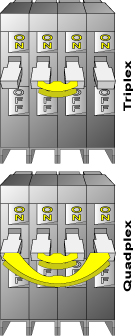
4/19/2024
The device that a power blower shoots through a conduit system when fishing the initial line. It typically has a hard plastic core with a flexible foam body that fits a specific pipe size. It comes in 1/2" through 6" conduit sizes and has a loop at both ends to attach the fish line.
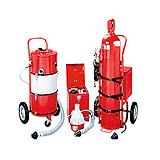
4/19/2024
Basket type pulling grip where wire mesh tightens over wire when pulled.

4/19/2024
The steel conduit hanger is used to secure 1/2" to 4" rigid (GAL) or EMT conduit to some type of support using the hole on top of the hanger. Typically, the pipe is suspended from strut or directly from the concrete using a piece of threaded rod but the hanger is also used to attach conduit directly to an insulator or some other surface. Manufactured by Steel City, Erico (Caddy), Bridgeport and others; the hanger is available with or without the lower bolt and nut. Originally invented by Minneralac in 1904 as the Standard Conduit Hanger.
"I hit my head on another pain hanger."
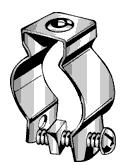
4/19/2024
This is a ¾" wide galvanized steel band with holes to accommodate nails and bolts. Available with the holes evenly spaced or with alternating small and large holes. It is typically used to hang some kind of pipe from some kind of support system such as strut, wooden studs or simple masonry.
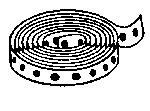
4/19/2024
This is an insulated throat metal bushing that when used in conjunction with a locknut, affixes GAL or IMC to a metal enclosure and provides abrasion protection to the wire insulation. It comes in die-cast or malleable iron with a plastic insulator.
